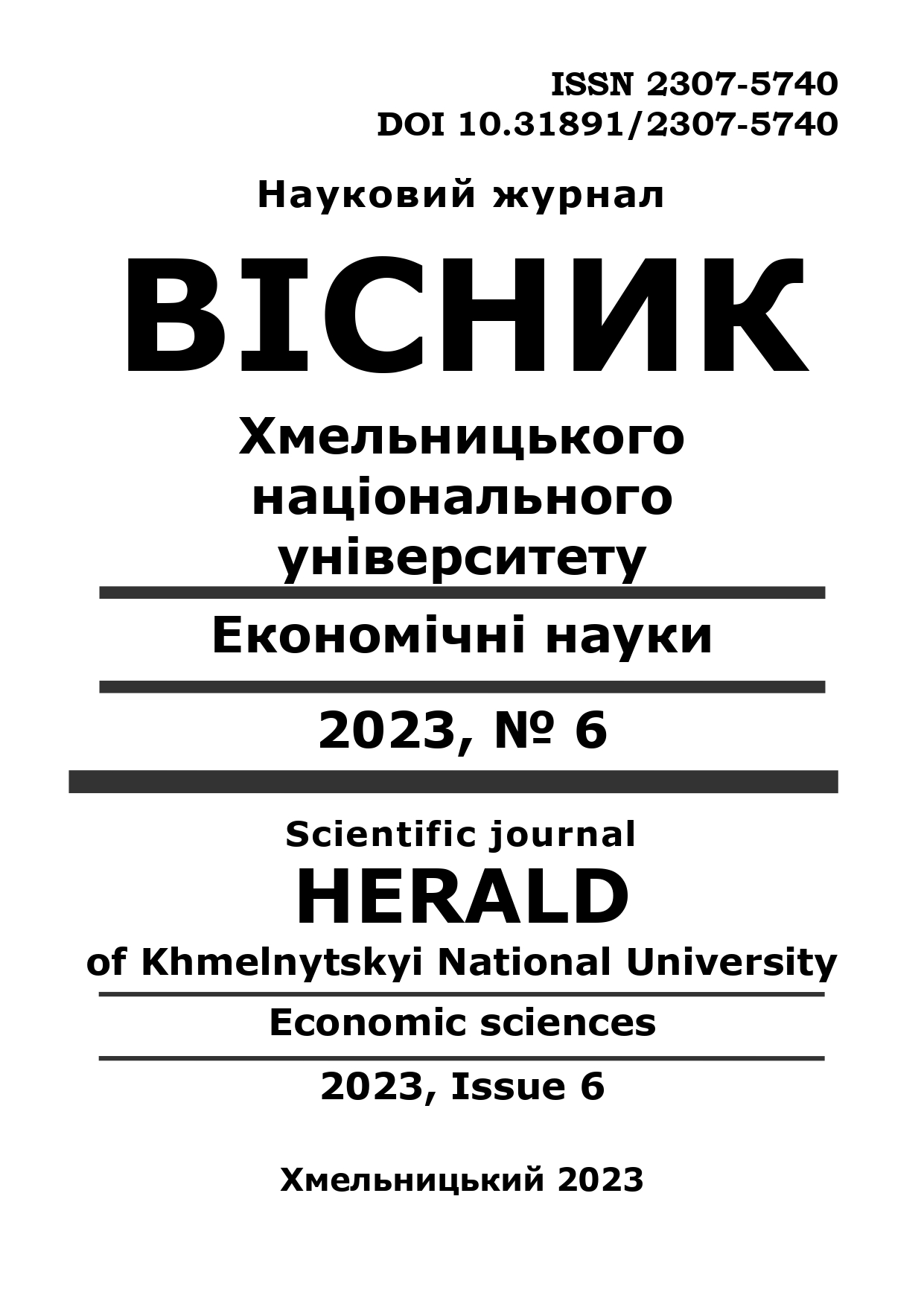SOCIO-ECONOMIC CYCLES: THEORETICAL INTERPRETATION AND STATISTICAL EVALUATION
DOI:
https://doi.org/10.31891/2307-5740-2023-324-6-65Keywords:
sustainable economic development, macroeconomics, cyclicality, socio-economic cycles, statistical evaluationAbstract
Sustainable national economic development requires a balance of aggregate demand and aggregate supply. The country's government is working out economic and legal mechanisms to achieve macroeconomic balance against factors that can disrupt it. The preconditions of macroeconomic instability include exogenous (natural and military-political) and endogenous (macroeconomic cyclical development). Due to the combination of these factors, achieving national macroeconomic balance is an urgent scientific and practical task for economists, scientists who study macroeconomics, as well as politicians and government officials. The key questions that need to be answered are the length of the cycle, the pace of the recession, and most importantly, the development of effective mechanisms for restoring macroeconomic balance and its long-term maintenance. The study of sustainable national economic development assumes cyclicality. It can be considered an independent process from the point of view of the manifestation of self-regulation of the market economy, when the equilibrium will be restored after a certain period of time by the action of market mechanisms, and also as a process of decline in business activity, which can be scientifically and practically studied as a phenomenon and, accordingly, an effective macroeconomic strategy of government policy can be identified. With the aim of accelerated and controlled passage of the economic cycle and development of effective government instruments, scientists study the essence and causes of macroeconomic instability, manifestations of unemployment and inflation. Cyclicality should be considered as a movement of the national economy, a form of its development and improvement. The socio-economic cycle involves fluctuations in the macroeconomic situation (level of employment, production and prices) from recession to upswing against the background of the general trend of the dynamics of the gross domestic product. The success of the government's macroeconomic policy is determined by the cause of the crisis, the degree of state regulation of the economy, opportunities to use the results of scientific and technical development, and the ratio of the shares of the real and non-productive sectors of the economy. This approach involves theoretical interpretation and statistical evaluation of socio-economic cycles. The article considers the main aspects of the theoretical interpretation of socio-economic cycles. A review of the scientific works of leading macroeconomists regarding the study of the essence and manifestations of cyclicality in the economy, social life of society was carried out, and attention was also paid to the issues of the interrelationship of the development of the economies of different countries in the conditions of globalization. The main factors of cyclical fluctuations and their periodicity are highlighted, the main theoretical provisions of economic cyclicality are given. The article provides a methodology for statistical evaluation of socio-economic cycles and the selection of its individual phases (recession, boom) based on the application of the method of statistical equations of dependencies and the method of complex statistical coefficients. Using the method of statistical equations of dependence, the existence of a relationship between the result indicator (GDP, billion US dollars, y) and two factors: "External debt, billion US dollars, x", "Number of registered unemployed, thousands of people, z" was established . It was determined that the factor "External debt, billion US dollars, x" plays the main role in the formation of the output indicator (GDP). It is substantiated that when the value of "GDP, billion US dollars" increases by 1 billion dollars. In the USA, the factor "External debt, billion US dollars" is expected to increase by 0.63 billion US dollars, and with an increase in the value of "GDP, billion US dollars" by 1 billion dollars. In the USA, the value of the factor "Number of registered unemployed, thousands of persons" is expected to decrease. for 5.43 thousand persons. Cyclicality was studied on the basis of the two mentioned methods and two phases of the economic development cycle of Ukraine were identified: 2008-2009 and 2013-2015. A generalization was obtained regarding the existence of a phase of the seven-year economic cycle.


